If you told me eight months ago I’d be writing an article about Managed Futures ETFs comparing three of the top funds (DMBF vs KMLM vs CTA) head to head I wouldn’t have believed you.
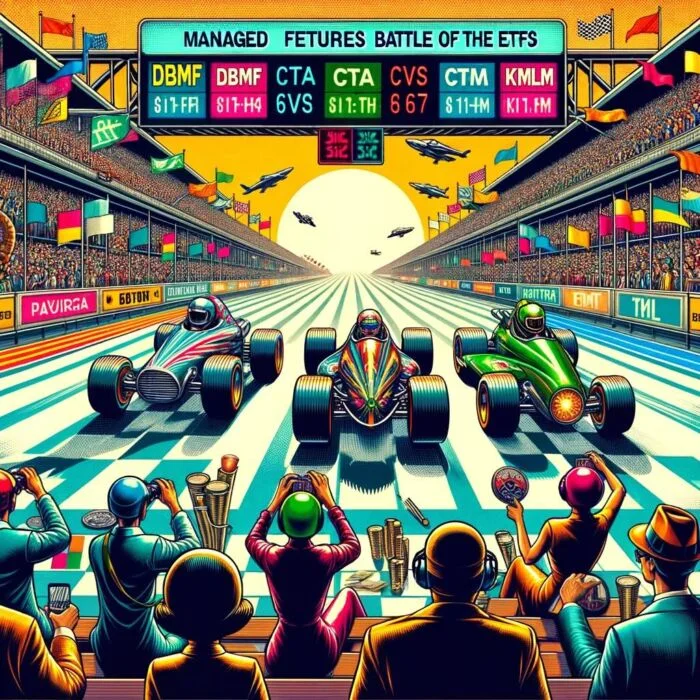
It’s incredible the exponential growth you can have as an investor by remaining curious, reading books/white papers and listening to informative podcasts while maintaining an open mind willing to both absorb and reject new information.
Alternative investments that offer uncorrelated return streams to both long-only equities and bonds are now an integral part of my portfolio and the way I think about diversification and asset allocation overall.
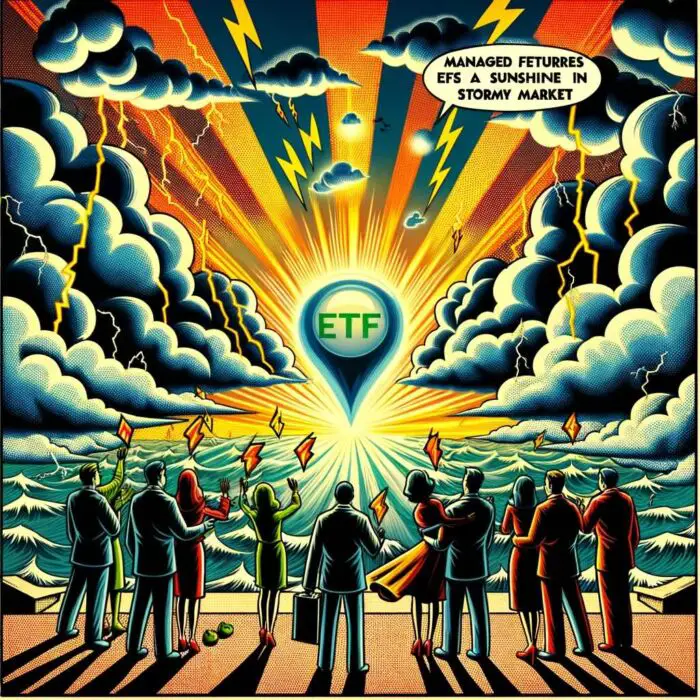
Managed Futures ETFs have offered investors a ray of sunshine in what has otherwise been a stormy year for most traditional asset classes.
Asset allocators committed to equity and fixed income only portfolios are now likely more receptive to alternative investments and strategies given the turbulent results of “so-called” classic portfolios that are prepared for only “growth” and “deflationary” economic regimes.
But what about “inflationary” and/or “recession” economic regimes?
Ah, indeed it’s been decades of smooth-sailing for the 60/40 but this year has revealed that not preparing for all economic outcomes leaves your portfolio vulnerable to the perfect storm that causes equities and bonds to correlate and get torched together.

What’s The Best Managed Futures ETF?
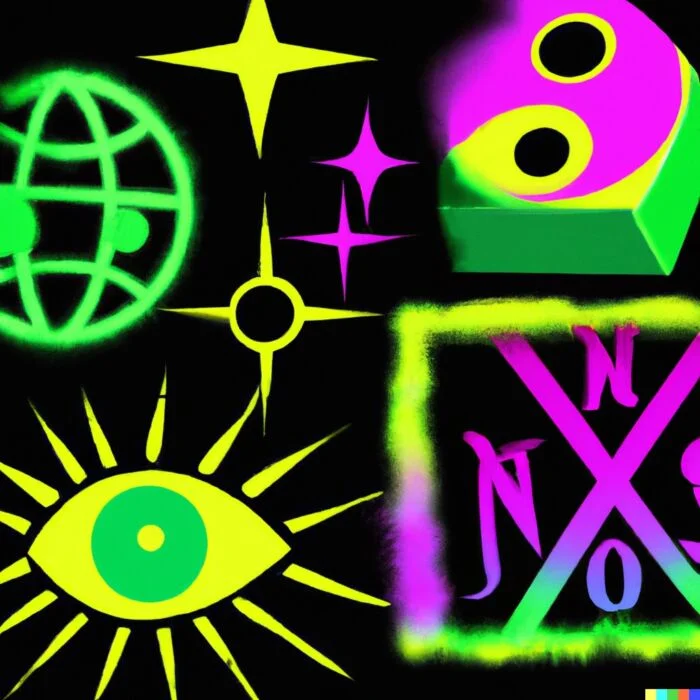
However, it’s one thing to identify a particular strategy (in this case managed futures) that you want to integrate into your portfolio and another thing to sift, sort and select the best fund that suits your strategic needs.
My goal with this article is to aid you in this process by positing the following question:
“What’s the best Managed Futures ETF?”
A targeted Google search “Managed Futures ETF list” reveals that we’re not entering into a crowded space when it comes to currently available options.

5 Managed Futures ETFs Available For Investors
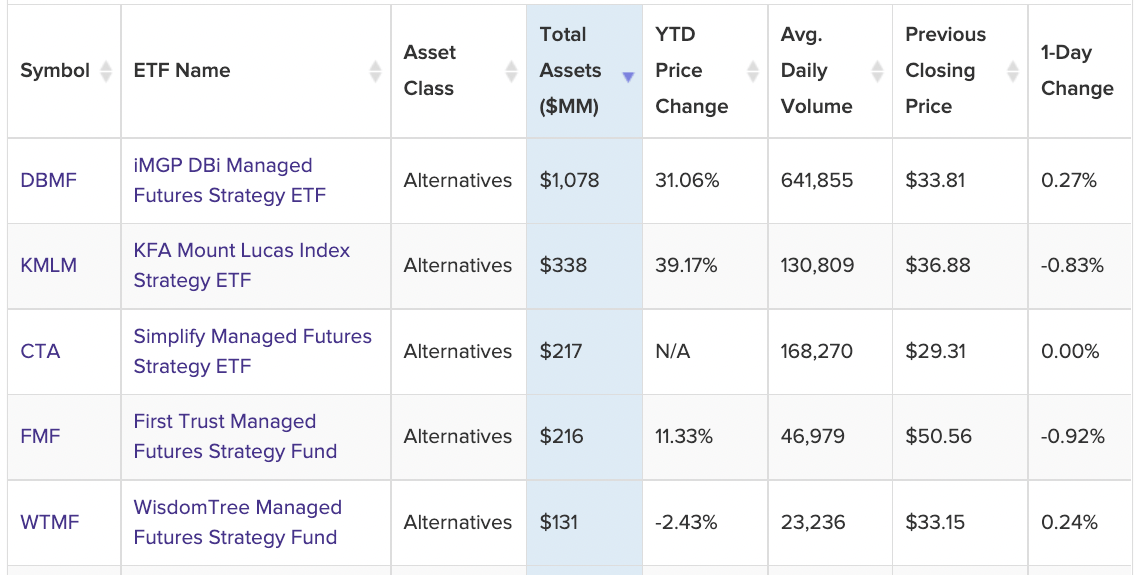
Although we have only five to choose from two of them (FMF and WTMF) have been excluded from consideration (more on that later).
Hence, it’s a battle of Managed Futures ETFs that is exclusively between DBMF vs KMLM vs CTA also known as iMGP DBi Managed Futures Strategy ETF vs KFA Mount Lucas Index Strategy ETF vs Simplify Managed Futures Strategy ETF respectively.
Fortunately, I’m familiar with all three products as I’ve done comprehensive reviews for each of the aforementioned tickers:
- DBMF ETF Review iMGP DBi Managed Futures Strategy ETF
- KMLM ETF Review KFA Mount Lucas Index Strategy ETF
- CTA ETF Review Simplify Managed Futures Strategy ETF
However, reviewing the funds individually as isolated entities is one thing but comparing them all head to head is an entirely different animal.
With this in mind I’ve come up with the following criteria to compare, contrast and rank by category while crowning an eventual overall winner.

Criteria For Ranking CTA vs KMLM vs DBMF
- Overall Strategy Of The ETFs
- Unique Features Of The Funds
- Isolated Long-Term Performance
- Ability To Generate Crisis Alpha (2022 Performance)
- Head To Head Performance (CTA vs DBMF vs KMLM)
- Manager Experience (Years Running Managed Futures Strategies)
- Assets Under Management
- Fees
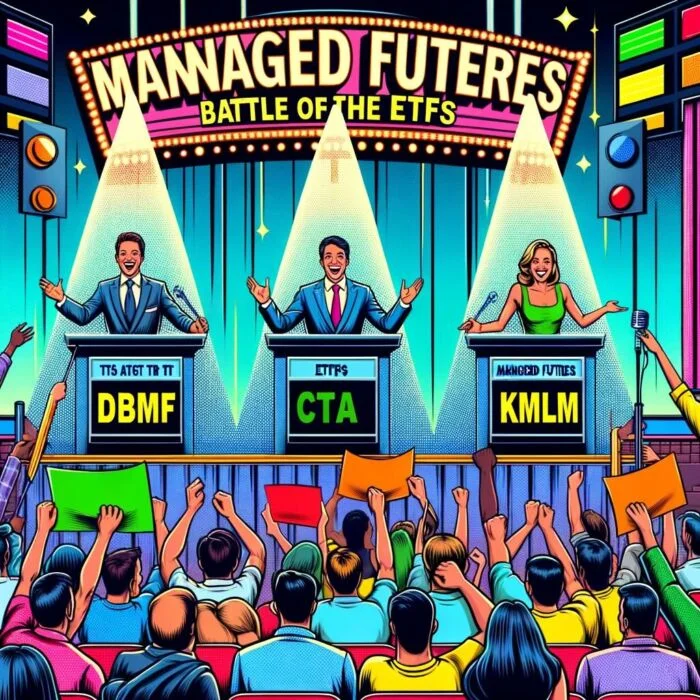
Why FMF or WTMF Didn’t Make The Cut?
Why didn’t FMF or WTMF make the cut for consideration as the best managed futures ETF?
Two specific reasons.
Firstly, both funds didn’t come close to performing as well KMLM, DBMF or CTA this year during a period of expected “crisis alpha” returns.
Secondly, both funds have been in existence for a while and have underperformed benchmarks that you can find on their respective fact sheet/information statement (SG Trend and Credit Suisse Managed Futures) by 100s of basis points since inception with overall anemic returns dating back to 2014 in a head to head comparison.
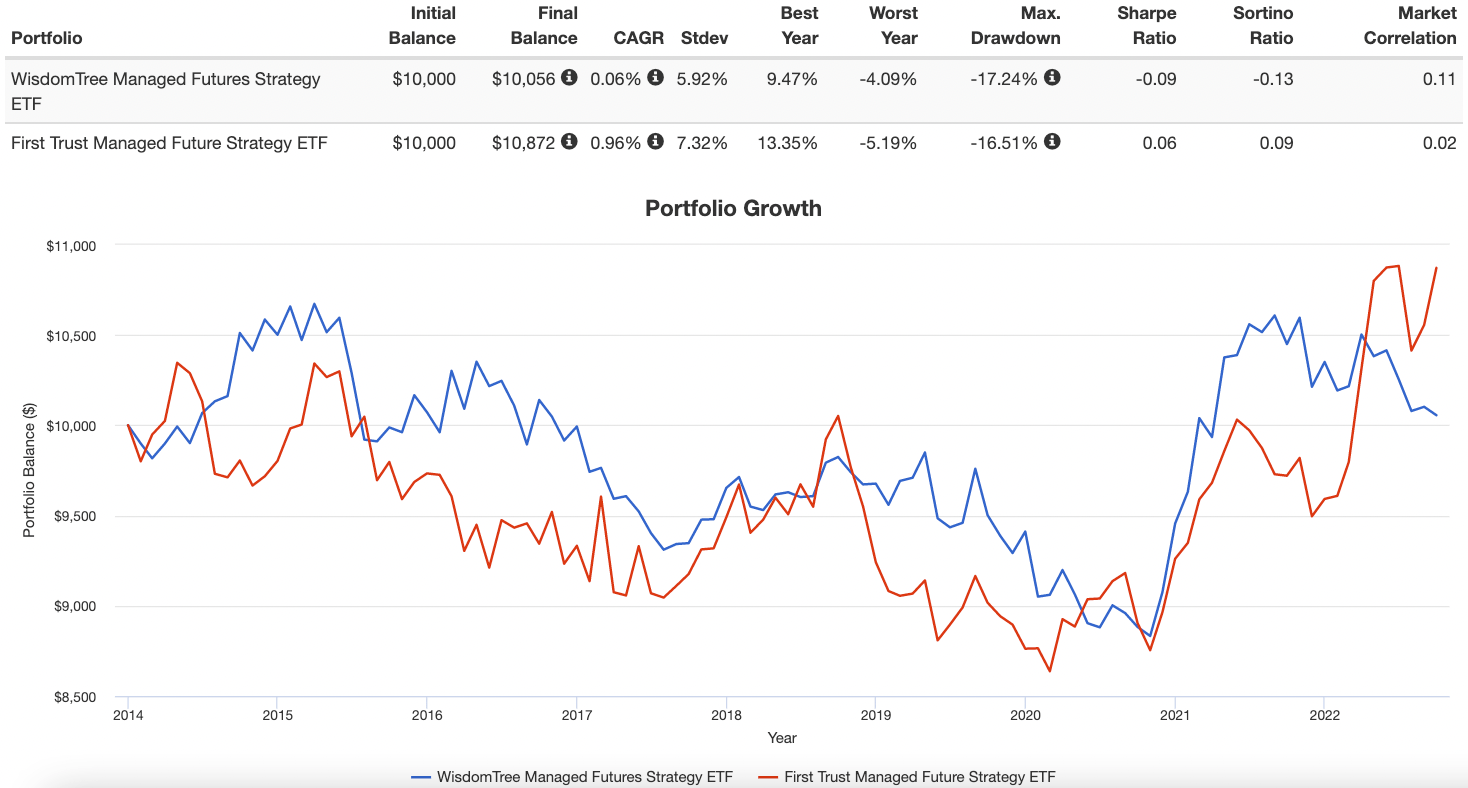
Don’t get me wrong; I love both WisdomTree and FirstTrust as fund providers!
In fact, I’ve reviewed GDE WisdomTree Efficient Gold Plus Equity Strategy Fund as one of my favourite capital efficient ETFs and FEMS First Trust Emerging Markets Small Cap AlphaDEX® Fund as one of the best multi-factor Emerging Markets funds out there.
However, these two funds have “woofed” to the point of not making the grade for the next round of consideration.
It appears both funds have a strict volatility mandate that is dampening returns.
I’d love to see a strategic overhaul to the point where they can compete with the likes of CTA, DBMF and KMLM as I’d be the first to cheer them on in this regard.
But for the time being it is “Close, but no cigar”.
Hey guys! Here is the part where I mention I’m a travel vlogger! This ETF or Mutual Fund review is entirely for entertainment purposes only. There could be considerable errors in the data I gathered. This is not financial advice. Do your own due diligence and research. Consult with a financial advisor.
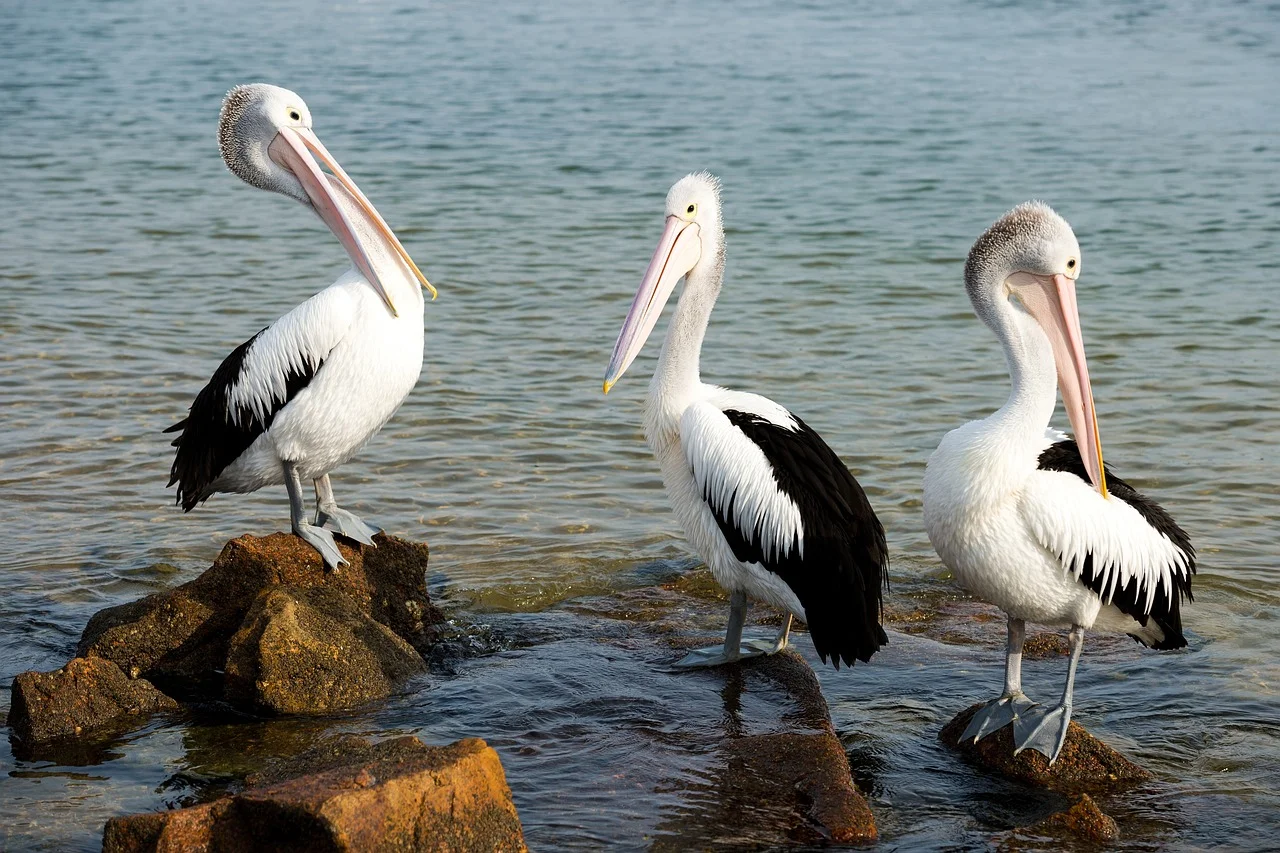
DBMF vs KMLM vs CTA ETF Review | What Is The Best Managed Futures ETF?

Let the quest begin to find the best managed futures ETF for savvy DIY investors and in-the-know advisors.
We’ll start off with the overall strategy and unique features each fund has to offer.
Managed Futures ETF Strategy + Unique Features
Let’s jump right into the fray by highlighting the top features each fund has to offer.
DBMF ETF
DBMF ETF sets itself apart from its competition by minimizing “single manager” risk by instead attempting to replicate the pre-fee performance of leading managed futures hedge funds without the exorbitant fees.
It has the capacity to go both long and short Global equity, bond, commodity and currency indexes via futures contracts and forward contracts.
Out of the three funds it is the ONLY one that has exposure to long/short equity indexes.
Moreover, it’s the only one that attempts to minimize single manager risk.
If exposure to long/short equity and minimizing single manager risk are your top considerations DBMF is the fund for you.
KMLM ETF
Overall, KMLM ETF provides global diversification by trading across 11 commodities, 6 currencies and 5 global bond markets.
What’s immediately apparent is how it distinguishes itself from other managed futures trend-following products by NOT allocating to equity market indexes.
Every month rebalancing takes place so that each sector is in alignment with its historical volatility.
In terms of the long/short capacity of the fund, KMLM ETF evaluates market trading signals on a daily basis evaluating the price versus its long-term moving average.
It adjusts gross overall exposure (long/short) according to risk level and volatility (which is roughly 200% to 300%).
If letting your horses run wild with high conviction (200 to 300% gross exposure), going global and/or EXCLUDING equity indexes tickle your fancy KMLM ETF probably makes the most sense.
CTA ETF
CTA Simplify Managed Futures ETF sets itself apart from its competition by providing 4 distinct long-short managed futures strategies under one ETF wrapper (trend, carry, mean reversion and risk-off) along with keying in specifically on commodity and financial futures while excluding equity and currency indexes.
Simplify Managed Futures ETF brings a multi-strategy managed futures approach geared towards absolute returns with the potential to thrive under any market regime.
The fund invests exclusively in US and Canadian commodities and rates only with a stated goal of ensuring low correlation to equities.
If you’re seeking a multi-strategy managed futures approach (trend, carry, mean reversion, risk-off) and want a more laser focused exposure (US and Canadian commodities and rates) you’ll likely fall in love with CTA.

DBMF vs KMLM vs CTA Performance | Crisis Alpha When You Need It Most?
Let’s move on to performance where we’ll compare DBMF vs KMLM vs CTA head to head to determine which fund has the best overall returns and whether or not each fund has delivered “crisis alpha” in 2022 with stocks and bonds both floundering.
Since CTA ETF is only a few months old we’ll first compare DBMF vs KMLM before considering the three of them together.
KMLM vs DMBF Performance H2H
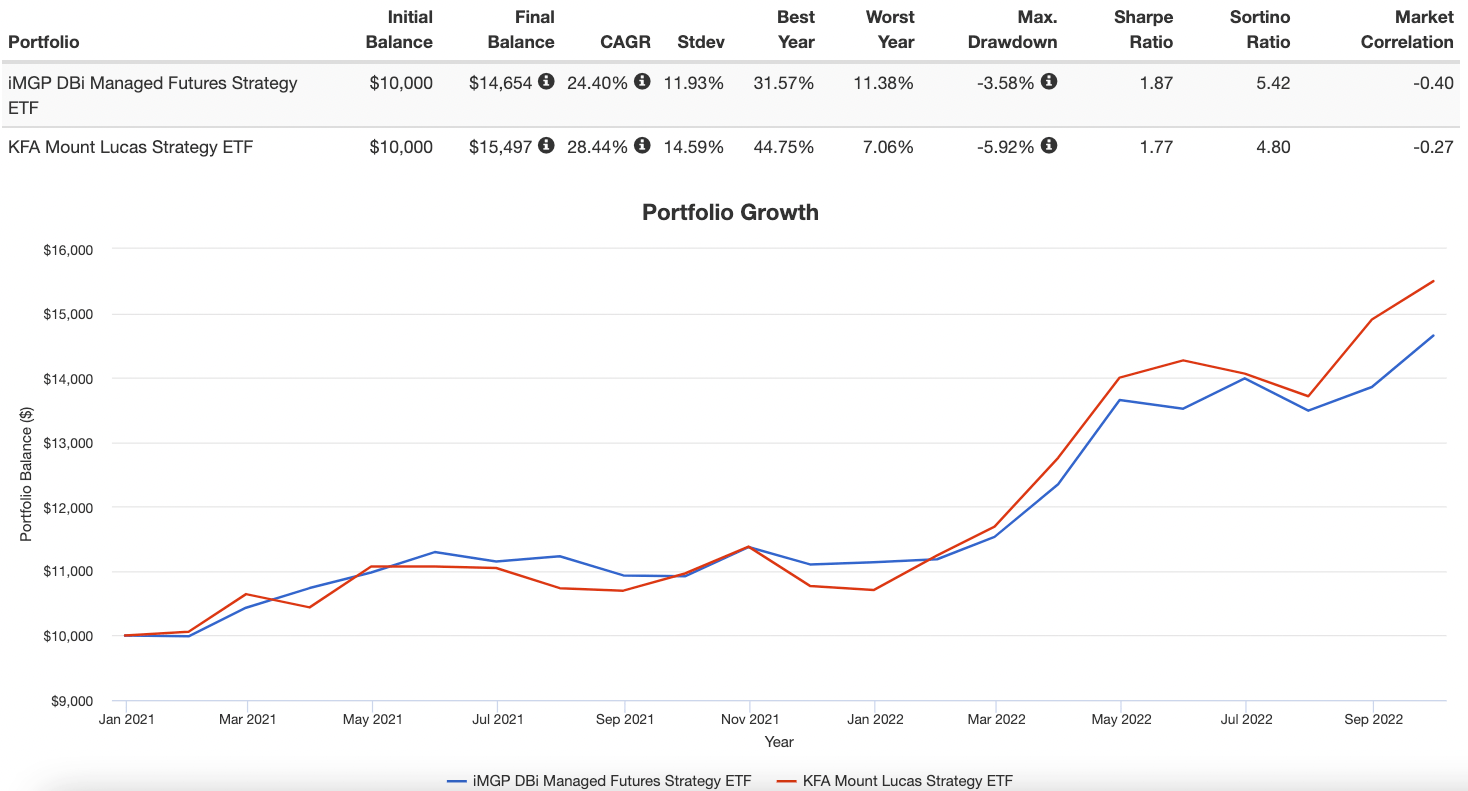
To say that both DBMF and KMLM ETF have had outstanding returns would be a gross understatement.
They’ve provided “insane levels” of “crisis alpha” in 2022 with returns of 44.75% for KMLM ETF and 31.57% for DBMF ETF.
Although KMLM has outperformed this year it was DBMF providing better returns in 2021 with 11.38% vs 7.06%.
Overall KMLM ETF has delivered a CAGR of 28.44% and RISK of 14.59% versus DBMF ETF offering a CAGR of 24.40% and RISK of 11.93%.
DBMF ETF has been a less volatile fund with a higher SHARPE (1.87) and SORTINO (5.42) vs 1.77 and 4.80 for KMLM ETF.
Note that they both have negative correlation from market returns that Managed Futures strategies typically offer with KMLM (-0.27) and DBMF (-0.40).

KMLM vs DMBF Monthly Performance H2H
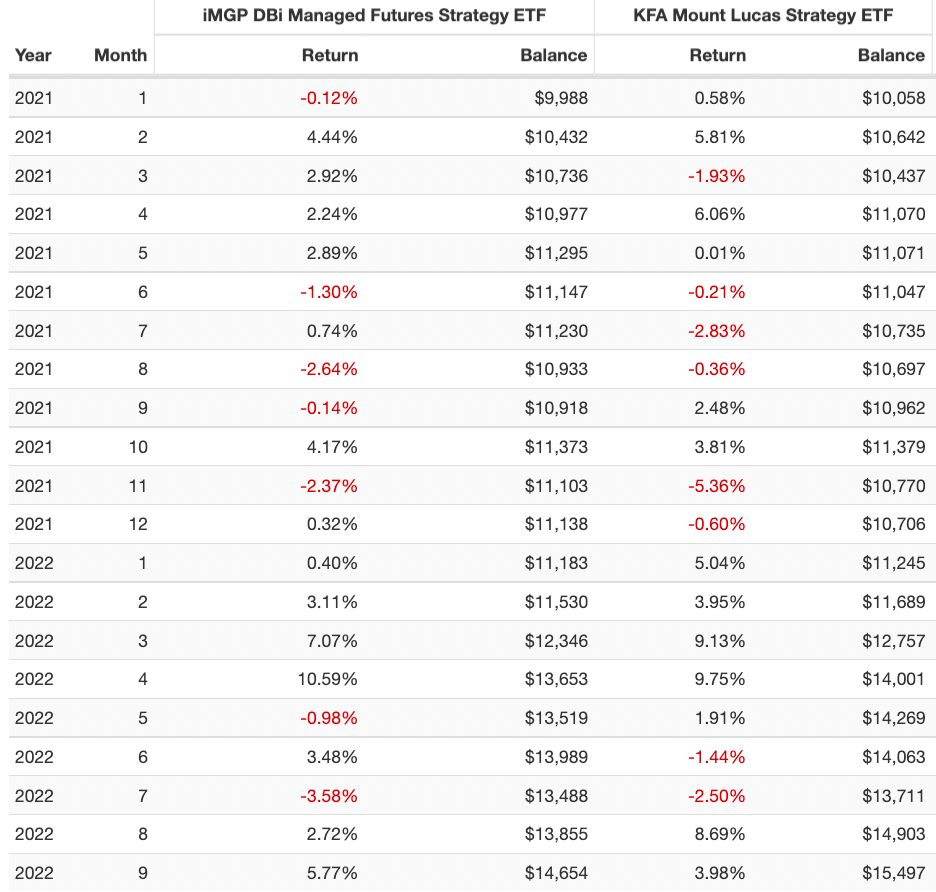
Noteworthy is that DBMF and KMLM ETF have monthly returns that are quite different from one another.
For instance, out of the 8 negative months KMLM ETF has experienced since January 2021, 4 have occurred when DBMF was above water.
For the 7 months the DBMF ETF was below water, KMLM ETF delivered three positive returns.
That begs the question of the correlation between the two?
KMLM ETF and DBMF ETF Monthly Correlations
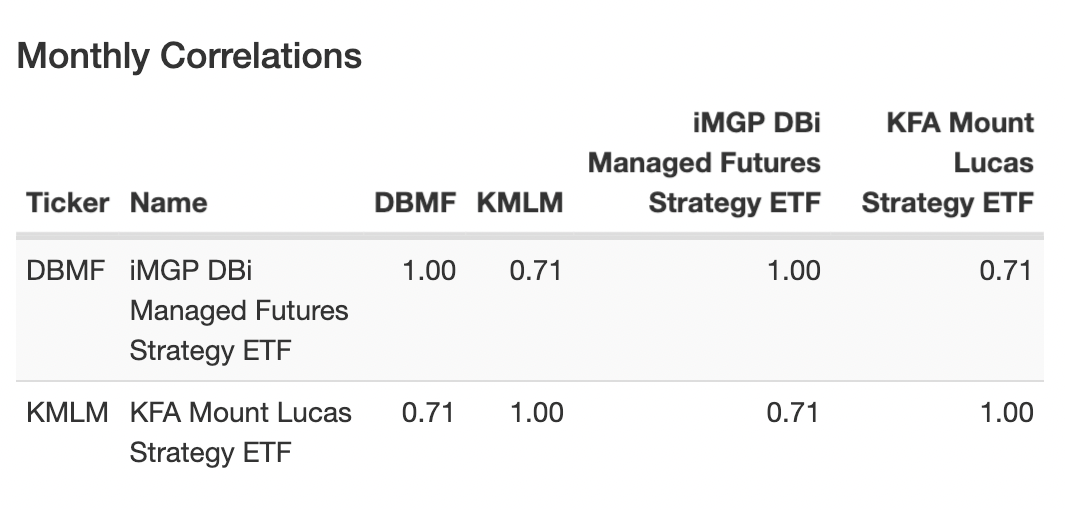
Here we’re able to see that the funds have a 0.71 correlation over a small sample size of monthly returns.
Irrespective, I’m dropping the hint that an ensemble approach between the two funds as opposed to picking a clear winner may be the most prudent allocation strategy.

CTA vs KMLM vs DMBF Returns
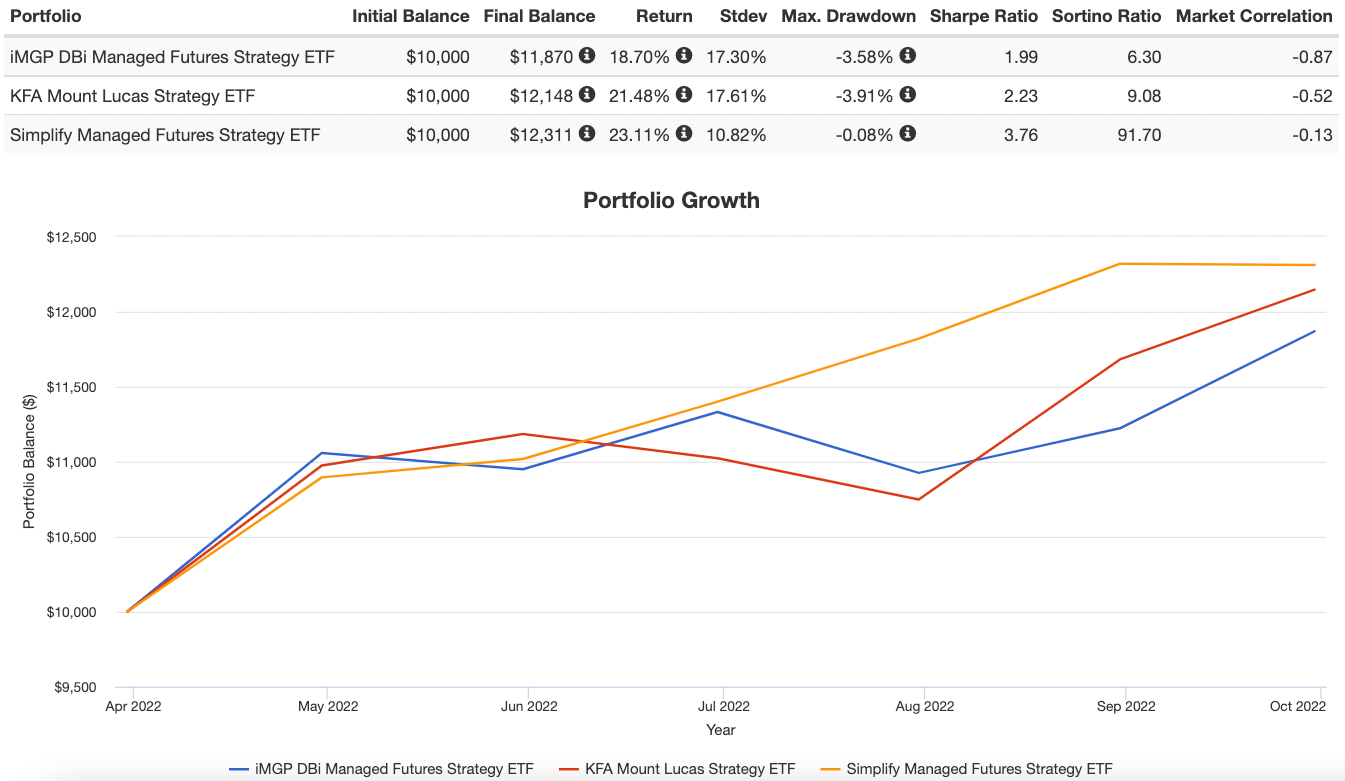
With KMLM and DBMF providing tremendous “crisis alpha” returns in 2022, it would take an almost superhero level effort for CTA to even be considered in the mix.
Well, this is the kind of debut it made in April amidst the backdrop of tumultuous market conditions.
source: Yena Audio on YouTube
Not only has CTA outpaced KMLM and DBMF but it has done so with otherworldly volatility management.
I’m pretty sure I’ve never seen a Sortino Ratio of 91.70 before.
However, it’s paramount to keep in mind this is a very small sample size.
But CTA has firmly established itself as a legitimate managed futures contender with its Thor like entrance into the ETF Terrordome.

KMLM vs DBMF vs CTA Monthly Correlations
Let’s check out the monthly correlations between the three ETFs.
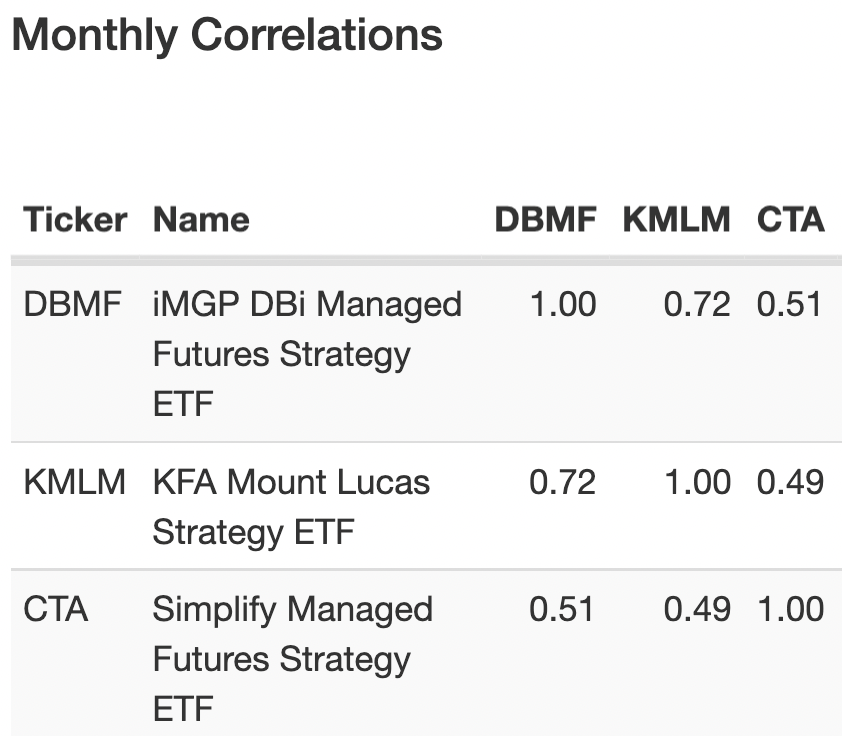
CTA ETF has a 0.51 correlation with DBMF ETF and 0.49 correlation with KMLM ETF.
The unique strategies offered by each fund are rather apparent at this point given that they’re not all slithering upwards and downwards in unison.
In terms of performance out of the gate and crisis alpha all three funds have been tremendous across the board.

Manager Experience + AUM + FEES: KMLM vs CTA vs DBMF
Let’s zoom in focusing upon manager experience for the three ETFs.
Manager Experience: 3 Managed Futures ETFs
DBMF ETF is a partnership between iMGP (iM Global Partner Funds) and DBi (Dynamic Beta investments).
Andrew Beer and Mathias Mamou-Mani head The New-York based team of Dynamic Beta investments with decades of experience in the alternative hedge fund space.
KMLM ETF is a partnership between KFA Funds and Mount Lucas Management.
Mount Lucas Management, as the sub-advisor, has provided diversifying alternative investment solutions since the late 1980s to a clientele of mostly high net worth individuals and institutions.
Mount Lucas Management has a storied (and most impressive) track-record dating back to 1988.
CTA has its systematic models and overall strategy designed by Altis Partners.
CTA ETF is “new” in the sense it has only been in the ETF marketplace for a few months but has the backing of a CTA management firm that has over 20 years of experience.
All three funds come from very experienced fund managers and firms.

AUM and FEES: 3 Managed Futures ETFs
Ticker: CTA
Net Assets: $217 (MM)
Expense Ratio: 0.75%
Ticker: KMLM
Net Assets: $338 (MM)
Expense Ratio: 0.92%
Ticker: DBMF
Net Assets: $1,078 (MM)
Expense Ratio: 0.95%
All three Managed Futures ETFs have accumulated assets like a rocket-ship to the moon in 2022.
Furthermore, all three offer hedge fund like strategies without the “typical” high fees all coming in at under 100 basis points.
For those seeking a fund with the most liquidity DBMF is the top dawg.
On the other hand, CTA offers the lowest fees with over 17+ basis points savings.

The Winner: KMLM vs DBMF vs CTA
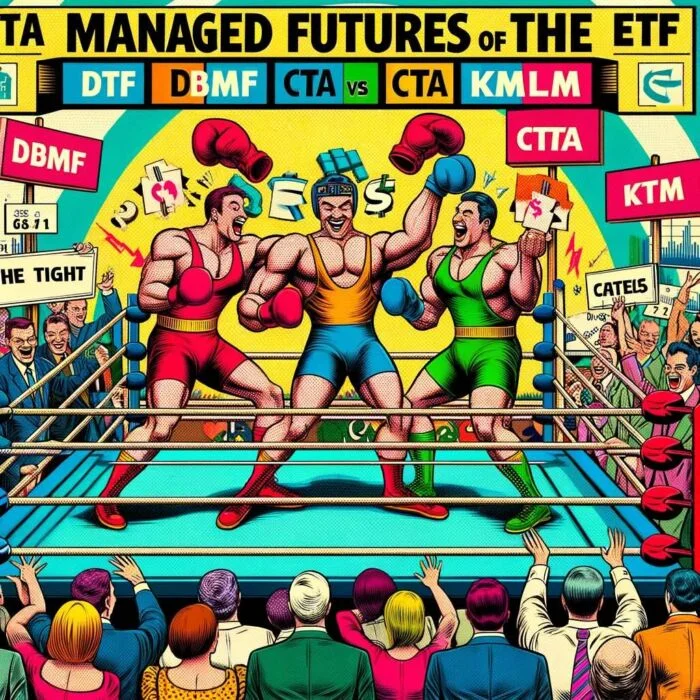
The whole point of this article was to crown a clear winner between KMLM vs DBMF vs CTA ETFs.
Yet, I’m not able to.
Sorry.
I’m not trying to cop-out or make excuses over here.
This is actually an investing blog with some pretty darn strong opinions from time to time.
As far as I’m concerned, it really boils down to what you want out of your managed futures fund.
Seeking the lowest fees?
CTA.
Longest tenured manager/track-record?
KMLM.
Hoping to eliminate single manager risk and have exposure to L/S equities?
DBMF.
Strong desire for a multi-strategy approach?
CTA.
Want a fund that plays within a high conviction level of 200 to 300% gross exposure?
KMLM.
Want the fund with the most AUM?
DBMF.

Ensemble Approach For The Win?
These asset allocation ideas and model portfolios presented herein are purely for entertainment purposes only. This is NOT investment advice. These models are hypothetical and are intended to provide general information about potential ways to organize a portfolio based on theoretical scenarios and assumptions. They do not take into account the investment objectives, financial situation/goals, risk tolerance and/or specific needs of any particular individual.
In my opinion, an ensemble approach is the most prudent way to gain managed futures exposure by integrating all three funds into your portfolio.
Why?
All three funds are strategically diverse enough from one another to the point they add a diversification benefit by combining them as an ensemble.
What would that look like in a portfolio?
That’s entirely up to you to decide.
If you have 15% of an alternative sleeve carved out for Managed Futures a neat 5% each to KMLM, CTA and DBMF makes a lot of sense to me.
If you’ve got 20% available maybe you pick your favourite one with a 10% allocation leaving space of 5% for the other two.

12-Question FAQ — What’s The Best Managed Futures ETF? (DBMF vs KMLM vs CTA)
1) What are “managed futures,” and why use an ETF?
Managed futures are systematic strategies that go long/short futures across asset classes (commodities, rates/bonds, currencies, equities) seeking diversified, crisis-resilient returns with low correlation to stocks and bonds. ETFs package these strategies with daily liquidity and lower fees than typical hedge funds.
2) Which three ETFs are compared here?
DBMF — iMGP DBi Managed Futures Strategy ETF
KMLM — KFA Mount Lucas Index Strategy ETF
CTA — Simplify Managed Futures Strategy ETF
3) What’s the high-level “elevator pitch” for each?
DBMF: Replicates the pre-fee performance of leading managed futures hedge funds, aiming to minimize single-manager risk; the only one of the three with long/short equity index exposure.
KMLM: Classic trend-following across 11 commodities, 6 currencies, 5 global bond markets; excludes equity indexes; runs conviction-based gross exposure (~200–300%) with monthly sector risk rebalancing.
CTA: Multi-strategy (trend, carry, mean reversion, risk-off) focused on US/Canadian commodities and rates; excludes equity and currency indexes; designed for low equity correlation and absolute returns.
4) How did they behave in a stress year like 2022?
All three delivered strong “crisis alpha.” KMLM surged the most in 2022; DBMF was stronger in 2021; CTA launched mid-2022 and posted standout (but very short-sample) risk-adjusted stats.
5) Are they highly correlated to each other?
They are related but distinct. DBMF vs KMLM showed ~0.7 correlation over a short history; CTA’s correlation was ~0.5 vs each. The strategy and market-set differences (equity exposure, multi-strategy vs pure trend, regional futures set) create useful diversification across the trio.
6) Why weren’t FMF or WTMF included?
Per the review, both underperformed in crisis alpha periods and trailed their own listed benchmarks by wide margins over time—likely due to strict volatility targeting that dampened returns.
7) Fees, assets, and manager pedigree—how do they stack up?
DBMF: ~$1.08B AUM, 0.95% expense; run by DBi/iMGP; focuses on hedge-fund replication.
KMLM: ~$338M AUM, 0.92% expense; Mount Lucas sub-advises with a track record back to the 1980s.
CTA: ~$217M AUM, 0.75% expense; strategy designed by Altis Partners (20+ years CTA experience).
(All figures as cited in the article.)
8) Which one is “best”?
There’s no single winner—it depends on priorities:
Lowest fee / multi-strategy focus: CTA
Longest institutional CTA heritage / higher-conviction trend: KMLM
Largest AUM / hedge-fund replication / equity index exposure: DBMF
9) Why consider an ensemble (owning more than one)?
Because their processes and universes differ, combining them can smooth whipsaws and reduce manager/model risk. A simple example: if you earmark 15% for managed futures, you might split 5%/5%/5% across KMLM/CTA/DBMF.
10) How would you pair these with a core portfolio?
They’re a diversifying sleeve alongside stocks/bonds (e.g., 60/40). Capital-efficient builders might also combine them with return-stacked exposures, but the article’s thrust is diversification first: size modestly (e.g., 10–20%), rebalance periodically or with bands.
11) What are the key risks?
Whipsaw/Trend Reversal risk (managed futures can lag in choppy markets)
Tracking/implementation differences vs. peers/benchmarks
Exposure set constraints (e.g., excluding equities/currencies)
Short live histories for some products; strategy drift over time
12) Bottom line—how do I choose?
Match the ETF to your must-haves:
Want equity index exposure and hedge-fund replication? Choose DBMF.
Prefer pure, high-conviction trend with broad global futures and no equities? KMLM.
Want multi-strategy with lower fee and rates/commodities focus? CTA.
Or, adopt the review’s favored ensemble approach to diversify across all three.
Nomadic Samuel Final Thoughts
I really appreciate the fact these three ETFs all exist and I support all three via an ensemble approach with my DIY quant portfolio.
I have direct positions in KMLM and DBMF and have exposure to CTA via Simplify Macro Strategy ETF FIG.
It was fascinating to see a poll I put out to my audience on Twitter also favoured an ensemble approach.
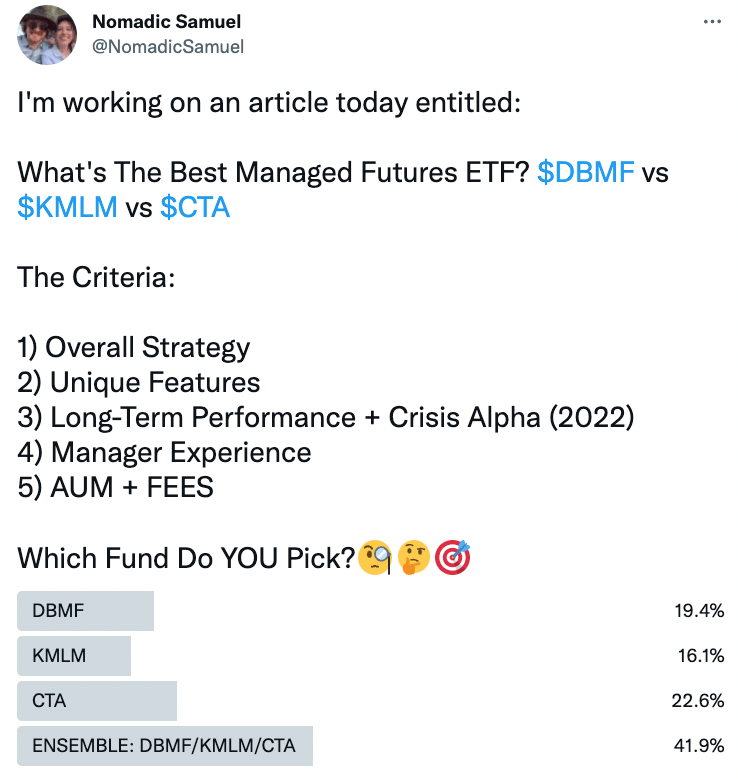
However, I’m curious to hear your opinion.
What do you think is the best managed futures ETF out there today?
Let me know in the comments below.
That’s all I’ve got.
Ciao for now.
Important Information
Comprehensive Investment Disclaimer:
All content provided on this website (including but not limited to portfolio ideas, fund analyses, investment strategies, commentary on market conditions, and discussions regarding leverage) is strictly for educational, informational, and illustrative purposes only. The information does not constitute financial, investment, tax, accounting, or legal advice. Opinions, strategies, and ideas presented herein represent personal perspectives, are based on independent research and publicly available information, and do not necessarily reflect the views or official positions of any third-party organizations, institutions, or affiliates.
Investing in financial markets inherently carries substantial risks, including but not limited to market volatility, economic uncertainties, geopolitical developments, and liquidity risks. You must be fully aware that there is always the potential for partial or total loss of your principal investment. Additionally, the use of leverage or leveraged financial products significantly increases risk exposure by amplifying both potential gains and potential losses, and thus is not appropriate or advisable for all investors. Using leverage may result in losing more than your initial invested capital, incurring margin calls, experiencing substantial interest costs, or suffering severe financial distress.
Past performance indicators, including historical data, backtesting results, and hypothetical scenarios, should never be viewed as guarantees or reliable predictions of future performance. Any examples provided are purely hypothetical and intended only for illustration purposes. Performance benchmarks, such as market indexes mentioned on this site, are theoretical and are not directly investable. While diligent efforts are made to provide accurate and current information, “Picture Perfect Portfolios” does not warrant, represent, or guarantee the accuracy, completeness, or timeliness of any information provided. Errors, inaccuracies, or outdated information may exist.
Users of this website are strongly encouraged to independently verify all information, conduct comprehensive research and due diligence, and engage with qualified financial, investment, tax, or legal professionals before making any investment or financial decisions. The responsibility for making informed investment decisions rests entirely with the individual. “Picture Perfect Portfolios” explicitly disclaims all liability for any direct, indirect, incidental, special, consequential, or other losses or damages incurred, financial or otherwise, arising out of reliance upon, or use of, any content or information presented on this website.
By accessing, reading, and utilizing the content on this website, you expressly acknowledge, understand, accept, and agree to abide by these terms and conditions. Please consult the full and detailed disclaimer available elsewhere on this website for further clarification and additional important disclosures. Read the complete disclaimer here.

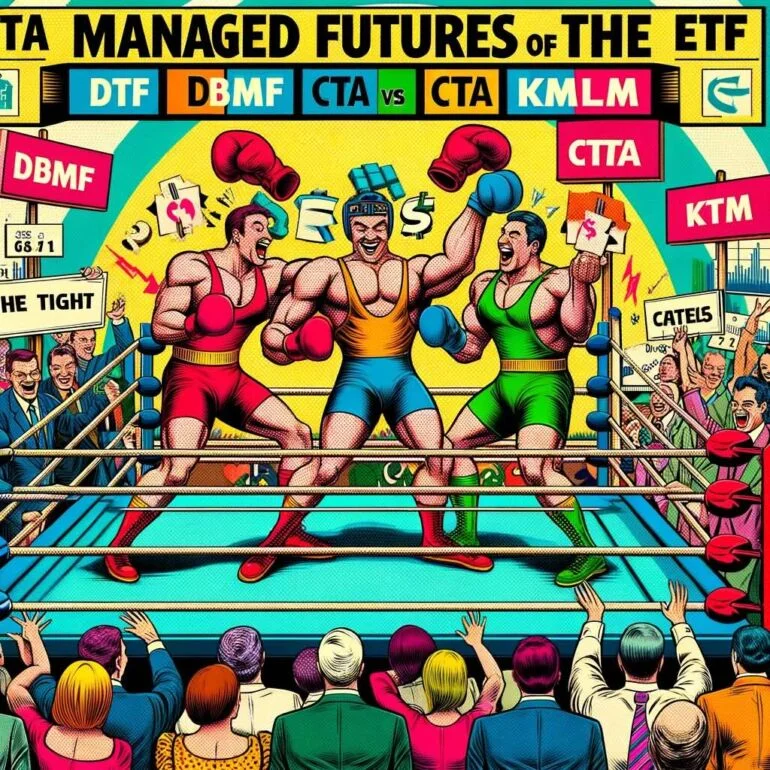




I am very new to the concept of managed futures and hedge fund ETFs. Tbis article was very informative. Thank you.
“Irregardless” isn’t a legitimate word. It’s “regardless” or “irrespective”.
Thanks! I just updated the post with “irrespective”.
Don’t be a cunt. He wrote you a free article.
What is the gross exposure range of CTA, KMLM and DBMF? I believe DBMF is around 1.6x currently and you mentioned KMLM is 2-3x. CTA the doc is confusing and I see either 1.2x or 8x.
Why not size them in your diversifying reccomendations according to notional exposure?
I hold 4% position with KMLM and am considering the blended “ensemble”. Great article, thank you. Who did all the interesting art, where did it come from? The raw, stripped down, basic tribal feel with primary colors is very appealing accompanying an article on managed futures, Lol. brilliant. Thanks again.
There’s a new ETF “HFMF” that targets 2x the returns of the managed futures industry. It should be a more diversified and volatile DBMF! The volatility so far has been DBMF < KMLM ~ HFMF < CTA.